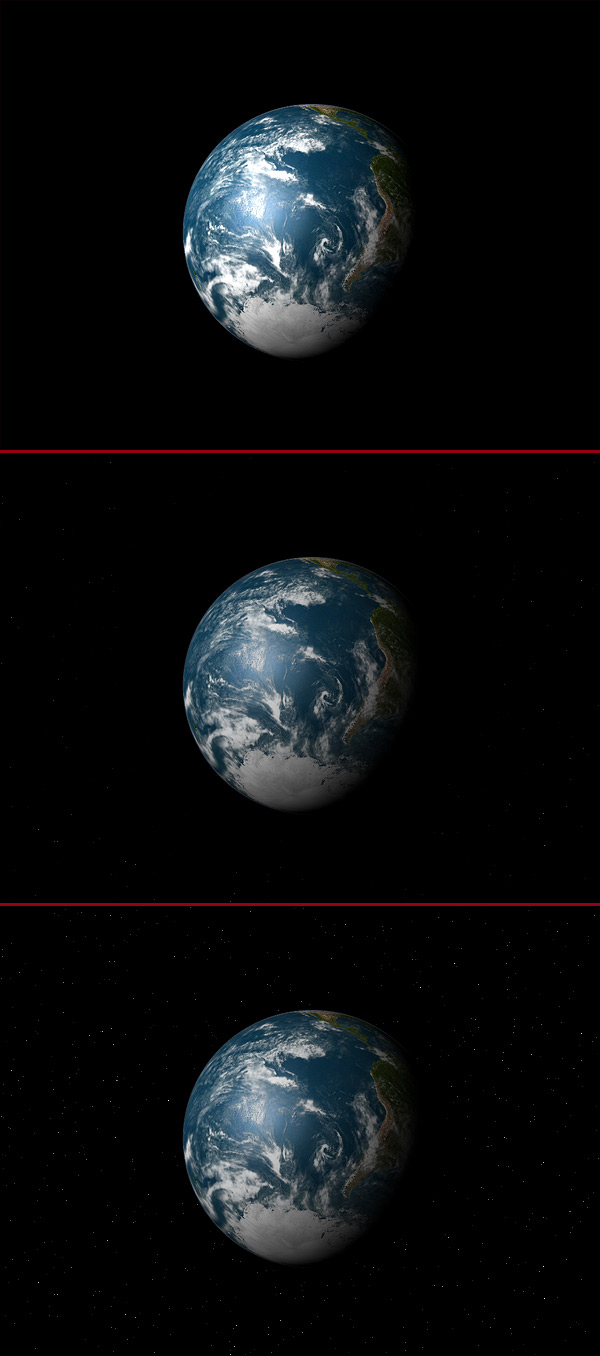hank wrote:And actually, if you looked at a star from that close, you'd probably be permanently blinded.
You'd also be vaporized I'd imagine...
hank wrote:"Better" is a matter of opinion, I guess. I'm more interested in Celestia as a visualization tool than as a visual simulation.
Malenfant wrote:I'd like Celestia to answer a simple question for me - what do other stars look like? We see a glaringly bright yellow ball in our sky, but what would you see if we were close enough to an M V star for it to be the same size as the sun in our sky? Would it still be blindingly bright? Would it look visibly red? And what about a red supergiant? Or a star like Sirius?
ElChristou wrote:HDR would be fantastic, but then Celestia won't become and elitist soft? (working fine only on high level cards?)
ElChristou wrote:HDR mean a work on contrast to simulate the reaction of our eyes when we pass form a dark ambient to a bright one or the contrary. In the case of Celestia, apart the sudden apparition of a body in the screen (in this case the stars will fade to invisible), this effect will not be very useful. HDR mean also simulating glare effects; this is fine in a complex environment, but in our case, we are dealing with an almost pure back environment... so the question is: how to contrast more than black vs white? this is not possible of course...
So if i'm not wrong, we have 2 principal problems: visibility of stars versus major bodies and glare effect on stars.
ElChristou wrote:Malenfant, we are both agree to say that Celestia must simulate some more realistic effects; the dev team is conscious of that, Chris is working on some solutions, perhaps with what propose the HDR, and to tell the truth it's almost perfect for what we want.
I'm just wondering if it's not using a too complex and heavy tool (normally dedicated to modify complex scenery) for what we have to simulate in Celestia: fading a background and adding some glare on stars...
Malenfant wrote:...In Celestia, all we have to worry about is the star and any nearby reflective or emissive light sources (ie planets, asteroids etc). The only radiosity we need to worry about is light reflected off a moon onto a planet and vice versa (or any other objects close enough to be lit by light reflected off a planetary body).
Malenfant wrote:In other words, in all likelihood we could use a much simplified but still effective version of HDR for Celestia.
The only radiosity we need to worry about is light reflected off a moon onto a planet and vice versa (or any other objects close enough to be lit by light reflected off a planetary body).


I agree.ElChristou wrote:Telepath, what you are proposing is full raytracing or even radiosity rendering, which is not possible in 3D real time because of the calculation power needed to do such rendering... let's wait 20 years to see that
I'd rather ..... see the developers focus on serious problems like this transparency issue first